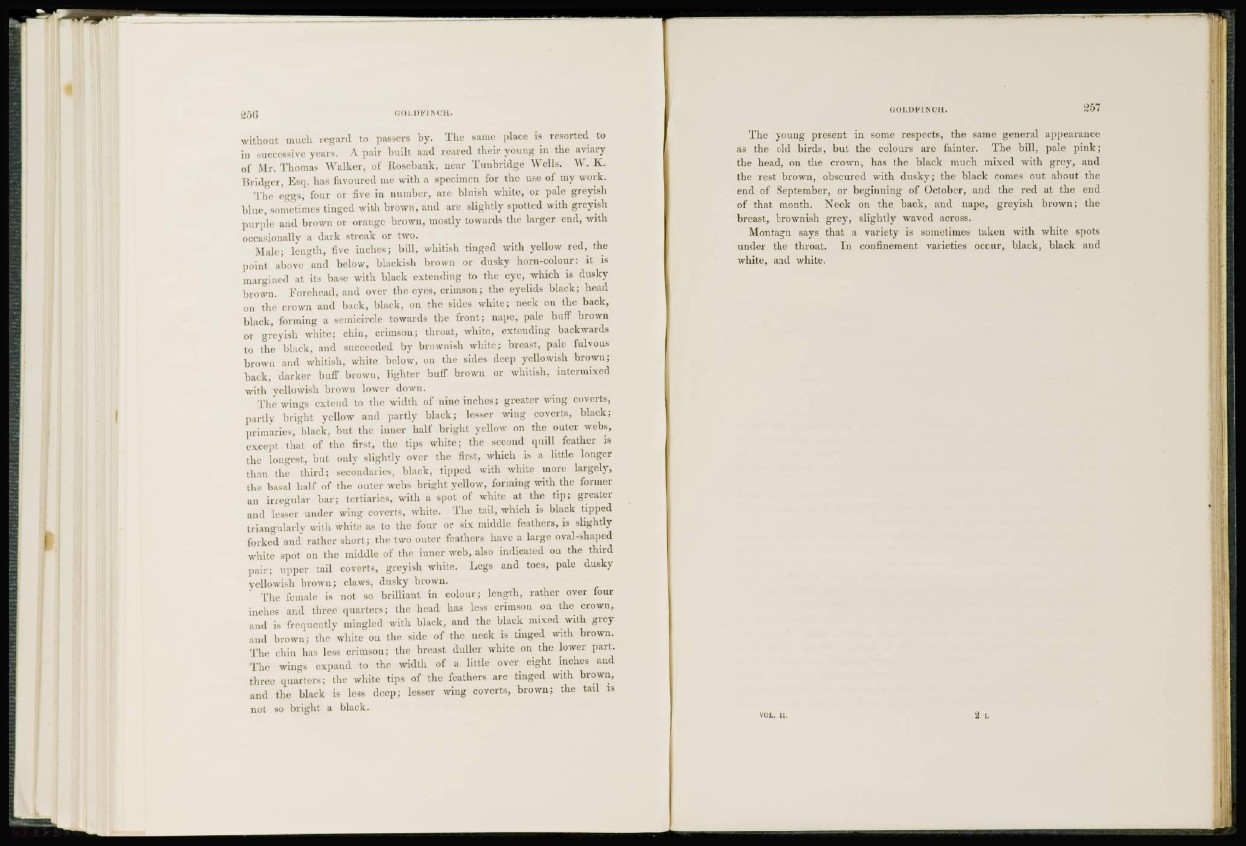
without much regard to passers by. The same place is resorted to
in successive years. A pair built and reared their young in the aviary
of Mr. Thomas Walker, of Rosehank, near Tunbridge Wells. W. K.
Bridger, Esq. has favoured me with a specimen for the use of my work.
The eggs, four or five in number, are bluish white, or pale greyish
blue, sometimes tinged with brown, and are slightly spotted with greyish
purple and brown or orange brown, mostly towards the larger end, with
occasionally a dark streak or two.
Male; length, five inches; bill, whitish tinged with yellow red, the
point above and below, blackish brown or dusky horn-colour: it is
margined at its base with black extending to the eye, which is dusky
brown. Forehead, and over the eyes, crimson; the eyelids black; head
on the crown and back, black, on the sides white; neck on the back,
black, forming a semicircle towards the front; nape, pale buff brown
or greyish white; chin, crimson; throat, white, extending backwards
to the black, and succeeded by brownish white; breast, pale fulvous
brown and whitish, white below, on the sides deep yellowish brown;
back, darker buff' brown, lighter buff brown or whitish, intermixed
with yellowish brown lower down.
The wings extend to the width of nine inches; greater wing coverts,
partly bright yellow and partly black; lesser wing coverts, black;
primaries, black, but the inner half bright yellow on the outer webs,
except that of the first, the tips white; the second quill feather is
the longest, but only slightlv over the first, which is a little longer
than the third; secondaries, black, tipped with white more largely,
the basal half of the outer webs bright yellow, forming with the former
an irregular bar; tcrtiaries, with a spot of white at the tip; greater
and lesser under wing coverts, white. The tail, which is black tipped
triangularly with white as to the four or six middle feathers, is slightly
forked and rather short; the two outer feathers have a large oval-shaped
wdiite spot on the middle of the inner web, also indicated on the third
pair; upper tail coverts, greyish white. Legs and toes, pale dusky
yellowish brown; claws, dusky brown.
The female is not so brilliant in colour; length, rather over four
inches and three quarters; the head has less crimson on the crown,
and is frequently mingled with black, and the black mixed with grey
and brown; the white on the side of the neck is tinged with brown.
The chin has lc>s crimson: the breast duller white on the lower part.
The wings expand to the width of a little over eight inches and
three quarters; the white tips of the feathers are tinged with brown,
and the black is less deep; lesser wing coverts, brown; the tail is
not so bright a black.
The young present in some respects, the same general appearance
as the old birds, but the colours are fainter. The bill, pale pink;
the head, on the crown, has the black much mixed with grey, and
the rest brown, obscured with dusky; the black comes out about the
end of September, or beginning of October, and the red at the end
of that month. Neck on the back, and nape, grevish brown; the
breast, brownish grey, slightly waved across.
Montagu says that a variety is sometimes taken with white spots
under the throat. In confinement varieties occur, black, black and
white, and white.